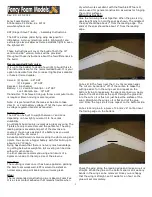
4
4. Technical Describtion:
Canopy construction:
The canopy of the CrossCountry² is made of nylon fabric by Dominico Tex Corp. and NCV Industries. This
synthetically manufactured fabric is woven with a reinforcing mesh to prevent tearing and increase tensile strength
at the seams. The coating makes the fabric water repellent, UV resistant and air impermeable.
The CrossCountry² consists of 61 cells. The wing tip (stabilizer) is pulled down and is integrated seamlessly into the
canopy.
The canopy is ventilated through openings on the underside of the profile nose. Cross ventilation is provided by
precisely dimensioned holes (cross ports) in the profile rib.
Each main profile rib is suspended from a line connection. They are reinforced in the profile.
Tensioning straps are sewn in between the groups of main lines to regulate the sail tension.
Reinforcements are sewn into the profile nose to ensure high shape retention and stability.
A low-stretch tape is sewn into the leading and trailing edges, which provides a sophisticated tension distribution
across the canopy calculated by our construction software
Suspension System:
The lines of the CrossCountry² consist of polyester-coated and uncoated aramid and polyester-coated PES /
Dyneema, depending on the location. The strength of the individual lines varies from 40 to 280 daN depending on the
location.
Depending on where the lines are installed, they are divided into upper lines (at the top of the canopy), middle lines,
main lines (or riser lines), stabilizer lines (at the wing end) and brake lines (at the top of the trailing edge) and main
brake lines (at the brake handle).
The lines are divided into A / B / C / D level and brake.
Within each level, 2 gallery lines are combined into one middle line. The 4 gallery lines of the D plane are integrated in
the C middle lines. On the riser line level, 2 middle lines are grouped into a total of 6 riser lines per level and attached
to the corresponding risers.
The stabiliser lines are attached to the B-riser.
The brake or steering lines are combined into the main brake line according to the same principle.
The lines of each level are colored differently for easier control.
The riser of the CrossCountry² has 3 risers on each side.
The A-riser is divided into a main (A)- and a secondary riser (A'). In the A-riser and A´-riser 1 main line is attached.
In the B-riser 2 B main lines plus 1 stabilizer line are connected on each side.
The C riser holds 2 C main lines on each side. The upper lines of the D-level are joined to the C-level.
The main brake line is guided to the brake handle via a pulley on the C-riser.
The line connectors are made of stainless steel and are secured with a plastic insert against unintentional opening
and slipping of the lines.
There are no adjustable devices available.
The line arrangement is shown in the individual line plan.
Acceleration system:
The CrossCountry² has a foot acceleration system that automatically returns to the original position after use. The
riser does not have a lockable trimmer.
The acceleration system shortens the A and B risers and reduces the angle of attack of the canopy.In normal flight all
risers have the same length (53 cm with link). The A-risers are shortened by up to 17 cm and the B-risers by up to
12.5 cm when the acceleration system is operated. The C-risers are not shortened.
suspension point
harness
Accelerator
brommel hook
accelerator
Coloured
marking
Brake handle
attachment
5
Functionality and handling:
Before take-off, the brummel hooks are hooked into the brummel hook of the acceleration system of the harness's
foot accelerator. Make sure that the suspended accelerator is running freely.The length of the foot accelerator must
be set correctly before using it for the first time. This is done best in the simulator. The length is set correctly if the
accelerator rope still has some slack and is not under tension when the accelerator is not in use.
By operating the foot accelerator the pilot shortens the A/B belts by a pulley system which reduces the force.
Overview risers:
trim flight position
5. Technical Data:
size
L - 29
M - 27
S - 25
XS - 23
Flat surface
m²
29
27
25
23
Flat span
m
12,74
12,29
11,83
11,34
Flat aspect ratio
A/R
5,6
5,6
5,6
5,6
Projected surface
m²
24,3
22,62
20,94
19,27
Projected span
m
9,82
9,47
9,11
8,74
Projected aspect ratio
A/R
3,96
3,96
3,96
3,96
Min take off weight
Kg
95
80
70
60
Max take off weight
Kg
120
105
95
85
V-Trim
Km/h
37
37
37
37
V-Max.
Km/h
54
54
54
54
LTF / EN Category
B
B
B
B
Changes of these data are possible!
accelerated flight position
Schematic view harness
- Accelerator arrangement on harness -
Foot pedal
pulley
of harness
B
A
A’
C
angle change
accelerator
Harness
B
A
A’
C
D
pulley
Brake line
B
A
A’
C

































